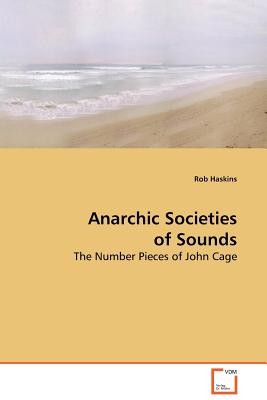
- We will send in 10–14 business days.
- Author: Rob Haskins
- Publisher: VDM Verlag
- Year: 2009
- Pages: 280
- ISBN-10: 3639132092
- ISBN-13: 9783639132090
- Format: 15.2 x 22.9 x 1.6 cm, softcover
- Language: English
- SAVE -10% with code: EXTRA
Reviews
Description
John Cage (1912--1992) is probably best known for works that challenge the fundamental definition of music---for example, his groundbreaking 4'33". In the last six years of his life, however, Cage wrote 48 compositions now known as the Number Pieces---works, usually scored for conventional Western instruments, that often contained precisely defined pitches. Each performer in one of these pieces performs his or her music in a strict order, but the actual start- and stop-times for each musical event vary because of Cage's notational system called "time brackets." While the time-bracket system ensured that the total time for a performance would always remain the same, it allowed sufficient flexibility to the performers in the spirit of Cage's indeterminate aesthetic--- the brackets made the music became, in his words, "earthquake proof." This book offers an overview of the series, an exploration of sources and compositional process, an analytical discussion of selected works, a contextual inquiry into the works with respect to Cage's interests in American anarchistic traditions, and a concluding discussion that considers aspects of reception and historiography.
EXTRA 10 % discount with code: EXTRA
The promotion ends in 17d.04:13:10
The discount code is valid when purchasing from 10 €. Discounts do not stack.
- Author: Rob Haskins
- Publisher: VDM Verlag
- Year: 2009
- Pages: 280
- ISBN-10: 3639132092
- ISBN-13: 9783639132090
- Format: 15.2 x 22.9 x 1.6 cm, softcover
- Language: English English
John Cage (1912--1992) is probably best known for works that challenge the fundamental definition of music---for example, his groundbreaking 4'33". In the last six years of his life, however, Cage wrote 48 compositions now known as the Number Pieces---works, usually scored for conventional Western instruments, that often contained precisely defined pitches. Each performer in one of these pieces performs his or her music in a strict order, but the actual start- and stop-times for each musical event vary because of Cage's notational system called "time brackets." While the time-bracket system ensured that the total time for a performance would always remain the same, it allowed sufficient flexibility to the performers in the spirit of Cage's indeterminate aesthetic--- the brackets made the music became, in his words, "earthquake proof." This book offers an overview of the series, an exploration of sources and compositional process, an analytical discussion of selected works, a contextual inquiry into the works with respect to Cage's interests in American anarchistic traditions, and a concluding discussion that considers aspects of reception and historiography.


Reviews